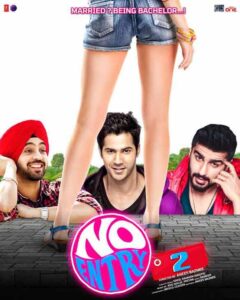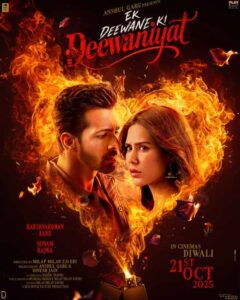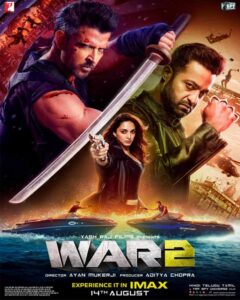Bollywood Cinema
– The Heartbeat of Indian Entertainment
Bollywood, based in Mumbai (formerly Bombay), is the largest film industry in the world in terms of the number of films produced annually.
It forms the beating heart of India’s cinematic identity, producing over 1,000 Hindi-language films every year, watched by billions of people across continents.
But Bollywood is more than numbers — it’s a reflection of India’s soul: its colors, emotions, contradictions, and dreams.
From romance to rebellion, melodrama to modern realism, Bollywood has evolved from black-and-white classics to global blockbusters, while always keeping its unique rhythm — a rhythm of music, emotion, and magic.
🏛️ A Journey Through Time: The Evolution of Bollywood
🎬 The Silent Beginnings (1910s–1930s)
Bollywood began with Dadasaheb Phalke’s Raja Harishchandra (1913), India’s first full-length feature film.
The early films were silent but rich in expression — mythological and historical stories that reflected India’s culture and values.
By the late 1920s, film studios emerged in Bombay, paving the way for the “talkies.”
🎤 The Talkie Revolution (1930s–1940s)
India’s first sound film, Alam Ara (1931), revolutionized cinema with songs and dialogues.
Music became integral to storytelling — a defining feature that still distinguishes Bollywood from world cinema.
During the 1940s, amid the freedom struggle, films like Kismet (1943) and Shaheed (1948) carried patriotic undertones, inspiring hope and identity among the masses.
🕊️ The Golden Era (1950s–1960s)
The post-independence decades are considered the Golden Age of Hindi cinema.
Directors like Raj Kapoor, Guru Dutt, Mehboob Khan, and Bimal Roy used cinema to explore social realism and human emotion.
🎞️ Iconic Films of the Era:
Mother India (1957) – India’s first Oscar-nominated film.
Pyaasa (1957) – a poetic masterpiece about art and alienation.
Awara (1951) – the “tramp” story that made Raj Kapoor an international icon.
This era gave India its greatest actors: Dilip Kumar, Dev Anand, Nargis, Meena Kumari, and Madhubala.
💥 The Masala Era (1970s–1980s)
Bollywood became bolder, louder, and more colorful. The “Masala” formula — a mix of action, romance, comedy, music, and emotion — dominated screens.
The rise of Amitabh Bachchan as the “Angry Young Man” in films like Zanjeer, Deewar, and Sholay defined a generation.
This was also when Bollywood’s storytelling became social and political — reflecting frustration with corruption and inequality in society.
🎶 Music flourished under R.D. Burman, Kishore Kumar, and Lata Mangeshkar, giving the world timeless melodies.
💖 Romantic Renaissance (1990s–2000s)
The 1990s saw a cultural shift. Liberalization brought new dreams, and Bollywood embraced romance, family values, and global glamour.
Directors like Yash Chopra, Karan Johar, and Sooraj Barjatya created feel-good family sagas set in opulent homes and exotic locales.
🎬 Landmark Films:
Dilwale Dulhania Le Jayenge (1995) – The ultimate love story, still running in theaters after nearly 30 years.
Kuch Kuch Hota Hai (1998) – Modern youth romance with style and heart.
Kabhi Khushi Kabhie Gham (2001) – The perfect blend of emotion and extravagance.
Stars like Shah Rukh Khan, Salman Khan, and Aamir Khan became global icons, symbolizing Bollywood’s golden export era.
🚀 Modern Bollywood (2010s–Present)
The new millennium transformed Bollywood from melodrama to realism and experimentation.
Digital technology, multiplexes, and OTT platforms changed how films were made and viewed.
Bollywood started balancing content and commerce — films like 3 Idiots, Dangal, Article 15, Gully Boy, and Pathaan proved that audiences now love both message and mass entertainment.
Today’s filmmakers — Zoya Akhtar, Anurag Kashyap, Rajkumar Hirani, Sriram Raghavan, and Sanjay Leela Bhansali — represent a new wave of cinematic diversity.
💃 The Signature Style of Bollywood Cinema
Music & Dance:
Bollywood songs are emotional bridges — from heartbreak to celebration. They advance the plot and reflect the inner world of the characters.
Music directors like A.R. Rahman, Pritam, Vishal-Shekhar, and Shankar-Ehsaan-Loy have global recognition.Emotions & Melodrama:
The heart of Bollywood lies in its emotional honesty. Tears, laughter, and moral lessons coexist, often in one scene.Family & Cultural Values:
Family bonds and social relationships drive many stories. “Sanskaar” (values) remains a recurring theme, from Hum Aapke Hain Koun to Kabir Singh.Color, Costume & Visual Grandeur:
Vibrant sets, traditional attire, and artistic visuals make Bollywood a feast for the senses.
🌍 Bollywood’s Global Influence
Bollywood isn’t just India’s pride — it’s a global cultural ambassador.
Its movies are loved in Africa, the Middle East, Russia, Europe, and the U.S.
In Russia, Awara and Disco Dancer became cult hits.
In the Middle East, stars like Shah Rukh Khan have fan followings rivaling Hollywood actors.
Bollywood dance and music now influence global pop culture, fashion, and television.
The Indian diaspora plays a key role in taking Bollywood beyond borders — connecting generations through films that celebrate home, love, and identity.
🎬 Modern Trends Shaping Bollywood
OTT Revolution: Platforms like Netflix, Amazon Prime, and JioCinema are giving space to diverse stories and filmmakers.
Female-Centric Films: Movies like Queen, Kahaani, Raazi, and Gangubai Kathiawadi mark a powerful shift toward women-led narratives.
Pan-Indian Collaborations: Crossovers with South Indian cinema (e.g., Jawan, KGF Hindi version, RRR) have blurred regional boundaries.
Realism & Biopics: Stories of real heroes — MS Dhoni, Dangal, Super 30 — are now mainstream successes.
👑 Bollywood Icons – Then & Now
| 🎭 Classic Era | 💫 Modern Legends |
|---|---|
| Amitabh Bachchan | Shah Rukh Khan |
| Dharmendra | Salman Khan |
| Rekha | Aishwarya Rai Bachchan |
| Rajesh Khanna | Aamir Khan |
| Hema Malini | Deepika Padukone |
| Nargis | Alia Bhatt |
| Dilip Kumar | Ranbir Kapoor |
| Meena Kumari | Priyanka Chopra Jonas |
🧡 The Spirit of Bollywood
Bollywood is more than just cinema — it’s emotion, rhythm, and poetry in motion.
It mirrors India’s diversity, unity, and ever-changing heartbeat.
It teaches us to dream big, love fearlessly, dance freely, and cry without shame.
Whether it’s Sholay’s heroism, Lagaan’s hope, or DDLJ’s romance — Bollywood remains timeless because it speaks the universal language of emotion.
🎬 “Bollywood is not just watched — it’s felt.”
120 Bahadur
120 Bahadur ✅ Basic Info Title: 120 Bahadur. Language: Hindi....
Read MoreNo Entry 2
No Entry 2 🎬 Basic Info Title: No Entry 2...
Read MoreEk Deewane Ki Deewaniyat
Ek Deewane Ki Deewaniyat 🎬 Basic Info Title: Ek Deewane...
Read More



